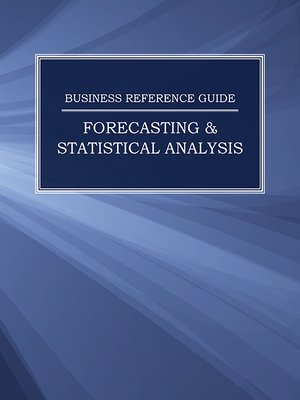
Sign up to save your library
With an OverDrive account, you can save your favorite libraries for at-a-glance information about availability. Find out more about OverDrive accounts.
Find this title in Libby, the library reading app by OverDrive.



Search for a digital library with this title
Title found at these libraries:
| Library Name | Distance |
|---|---|
| Loading... |
This volume begins with an essay by Ruth A. Wienclaw that discusses the different elements involved in the study of
statistics and data analysis and how they impact business efforts and management processes. Data analysis can offer
organizations many benefits, including decision facilitation, profit maximization, and hypothesis testing. To assist in
decision making, managers will often employ descriptive and inferential statistics. Descriptive statistics typically take
the form of graphs and other simple means of summarizing data, whereas inferential statistics generally deal with
convoluted and comprehensive business situations. To develop complex analyses, individuals will often make use of
statistical computing. This method, which is a cross between the statistics and computer science disciplines, blends
large packages of analysis to create collections of statistical algorithms. Mathematical tools can also be used in conducting
dynamic optimization. According to Wienclaw, “these tools help the analyst to maximize the effectiveness,
performance, or functionality of a system or minimize undesirable characteristics through the use of advanced mathematical
techniques.” Two additional forms of mathematical and statistical modeling at the disposal of organizations
are regression analysis and process analysis. Regression analysis is primarily used in business as a means of predicting
the value of one variable from another. Process analysis, on the other hand, pertains mostly to manufacturing and is
best applied when considering the consistencies and variations in a production process.







